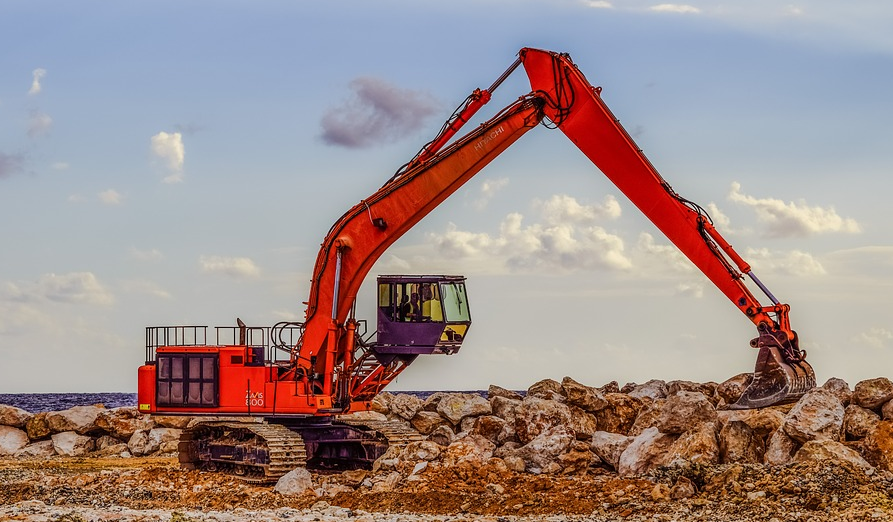Hydraulics offer excellent directional power and control when it comes to lifting, moving, and excavating heavy loads. However, hydraulic systems can also be highly dangerous if used incorrectly or handled carelessly.
Accidents, serious injury, or death can result from maintenance and tasks going wrong. This isn’t always the fault of an arm, or boom failure, or load drop – the fluid and mechanical parts used in hydraulics can also malfunction and break. Here’s a quick guide to the most common hydraulic faults and risks, and what you can do to avoid and limit them.

Hydraulic Problems
As hydraulic systems are complex, many different factors can cause them to break or fail. Ignoring or attempting stopgap solutions to these machine faults are the most common causes of hydraulic accidents. You should always stop the machine completely and seek professional assistance whenever you notice a fault developing.
1) Microleaks
Pinhole (or Micro) leaks are tiny breaches that appear in worn, damaged, or over-pressurised hydraulic pipelines and connectors. Although difficult to see, they can be identified by a hissing noise and puddles of hydraulic oil underneath the lines, or nearby.
You should NEVER approach or handle hydraulic lines that you suspect have microleaks. This is because microleaks can hypodermically inject your bare skin with hydraulic fluid at a searing level of pressure without you noticing. This can cause tissue decay, extreme pain, amputations, or even death.
Deactivate and depressurise the machine, wear personal protective equipment (PPE), and use a long length of cardboard to check for leaking fluid. Remember that hydraulic machines can retain internal pressure and heat for a long time after the power is switched off.
2) Breakage
Like any other precision device, hydraulic machines wear out, decay, and break. A sudden loss of strength or manoeuvrability, weird pressure and heat readings, slack hydraulic supporting lines, or fluid draining out of the reservoir should indicate that something’s wrong.
NEVER continue to use a hydraulic system that you know is wearing out or on the verge of failure. Doing so runs the risk of the load suddenly being dropped or hydraulic pressure ejecting parts at a dangerously high velocity from the core. Contact a trained repair technician as soon as you can.
It’s also worth remembering that pipelines can also decay if left on the shelf too long, or exposed to the elements in storage. If a newly installed part is behaving strangely, the part may have degraded.
Avoid this by carefully storing parts in a warm, dry, safe location, away from direct sunlight. Manufacturers include ‘use by’ dates on many items for your safety.
3) Over-pressurisation
Feeding too much pressure into a hydraulic system that isn’t rated for it can cause overheating, part failure, spontaneous ejections, and pipeline bursts. Make sure to NEVER exceed the recommended PSI for your components, and check your regulation and return valves often.
4) Human Error
Human error is the cause of a large number of accidents around hydraulics. Always follow the advice of trained engineers and instructors, safety manuals and guides, and safety markings and signs on site.
How Can I Make My Hydraulics Safer?
There are many preventative steps you can take to make sure that your hydraulic systems are in top condition.
Make sure that you schedule regular part and safety inspections by trained engineers, particularly for any hydraulics used or stored outdoors, or used very frequently (such as lift mechanisms). All your hydraulic components should be configured and rated to interlock and connect safely, running at a PSI rated for their capabilities.
If your hydraulics are fixed in place, you may want to consider installing safety barriers and guards around the machine to prevent accidental access. All employees working with hydraulic systems should be thoroughly trained in health and safety, fault spotting and troubleshooting.
Repairing Your Hydraulics With Hydrastar
Never attempt maintenance, repairs, or alterations on a hydraulic machine that is running or still pressurised. Never try to install stopgap solutions – unrated parts run the risk of sudden failure or bursting.
If you’ve identified a fault, call or email Hydrastar. We stock over 50,000 fluid power products for next-day dispatch to any location in the United Kingdom. If you don’t have the expertise on-site, our trained engineers can schedule an appointment to assess and repair your hydraulic system.


